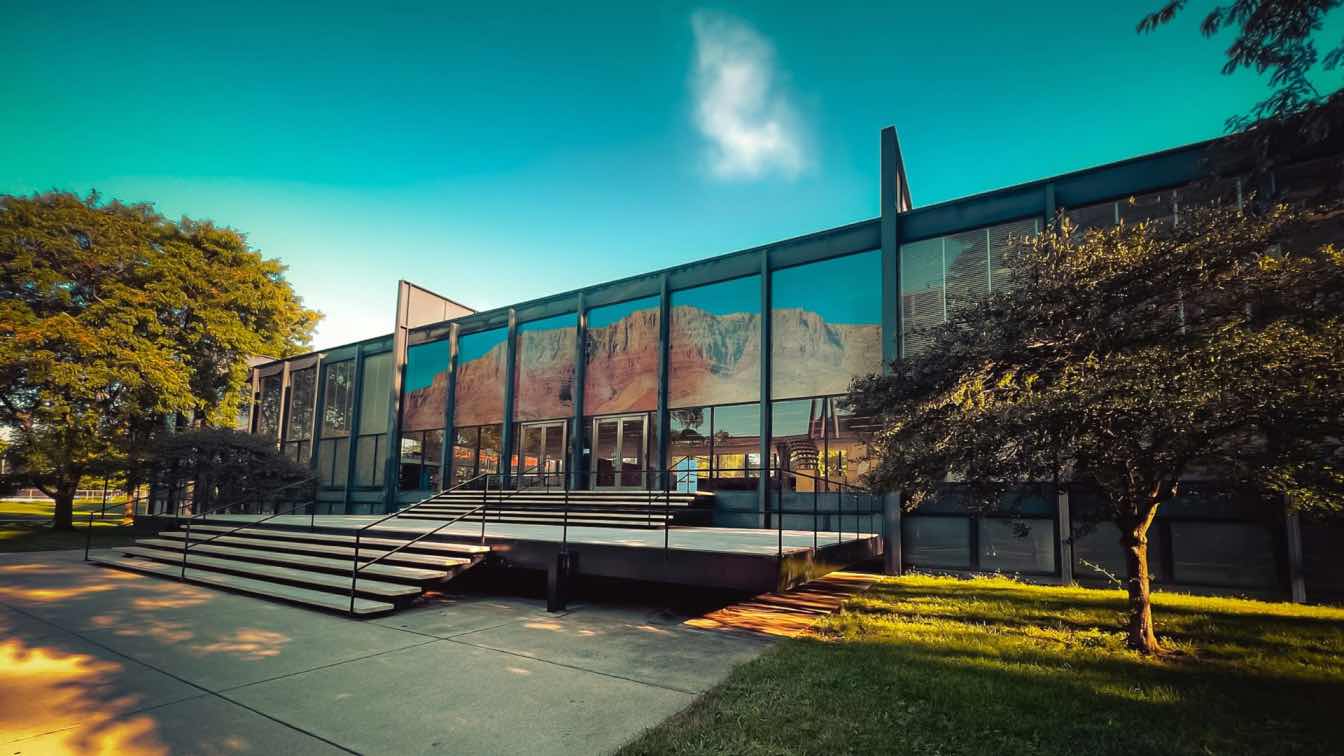Imagine stepping into a space where clean lines meet natural light, and every element serves a purpose without unnecessary ornamentation. This is the essence of Midcentury Modern Architecture, a style that marries form and function in a timeless and contemporary way.
Defining Midcentury Modern Architecture
Midcentury Modern Architecture's history stretches back to the optimistic post-World War II era. This period was heavily influenced by technological advancements and a societal shift towards embracing new ideas and ways of living. Architects and designers were eager to break free from the ornate, cluttered styles of the past, favoring a cleaner, more streamlined approach.
Modernist principles heavily influenced this movement, emphasizing simplicity, functionality, and a connection to nature. The post-war boom saw a surge in suburban development, where these new architectural ideas found fertile ground to flourish.
Key Characteristics
Midcentury Modern Architecture has a few defining characteristics that set it apart:
Clean Lines: This style's trademark is its clean, uncluttered lines. Buildings are designed with a minimalist aesthetic, avoiding unnecessary decoration and focusing on simplicity and precision.
Integration with Nature: One of the most distinctive features of Midcentury Modern homes is their seamless integration with the surrounding landscape. Large windows, open floor plans, and strategic use of natural materials create a harmonious relationship between indoor and outdoor spaces.
Functional Design: Every element in Midcentury Modern Architecture serves a practical purpose. The emphasis is on functionality, with spaces designed to meet the needs of modern living. This approach results in homes that are not only beautiful but also incredibly livable, with layouts that promote ease of movement and a sense of openness.
Influence on Design
The influence of Midcentury Modern Architecture extends far beyond buildings. Its principles have profoundly impacted furniture design, interior decor, and urban planning:
1. Furniture Design: This era saw the creation of iconic furniture pieces that combined form and function in innovative ways. Designers like Charles and Ray Eames, and Ludwig Mies van der Rohe crafted furniture that was both aesthetically pleasing and practical. Their work inspires contemporary furniture design, blending sleek lines with ergonomic functionality.
2. Interior Design: Midcentury Modern interiors are characterized by their open, airy layouts and strategic use of space. The emphasis on large windows and open floor plans allows natural light to flood, creating bright, inviting spaces. Natural materials like stone and wood add texture and warmth, making interiors feel grounded and connected to the environment.
3. Urban Planning: The principles of Midcentury Modernism also influenced the design of entire communities. Planners incorporated green spaces, pedestrian-friendly layouts, and integration with the natural landscape into their designs. This holistic approach to urban development aimed to create balanced, harmonious environments that catered to the needs of their inhabitants.
Iconic Midcentury Modern Furniture and Its Legacy
Midcentury Modern Architecture revolutionized buildings and brought a seismic shift in furniture design. The era's furniture pieces are celebrated for their form and function, embodying the same principles of simplicity and practicality that defined the architecture.
Charles and Ray Eames
When discussing Midcentury Modern furniture, the names Charles and Ray Eames often come to mind first. This husband-and-wife duo revolutionized furniture design with their innovative use of materials and commitment to functionality.
Their iconic Eames Lounge Chair and Ottoman, introduced in 1956, epitomize the blend of comfort and aesthetic appeal that defines Midcentury Modern design. Charles, originally an architecture student at Washington University in St. Louis, and Ray, a talented painter, and student at the Cranbrook Academy of Art, brought their diverse backgrounds together to create designs that were not only beautiful but also highly functional and accessible.
Their influence extends beyond furniture to educational toys, films, and architecture, leaving a lasting legacy in the design world. They initially gained attention through their work with plywood, which led to innovative designs during and after World War II.
The Eameses believed that design should be accessible to all, and their work reflects this ethos with its affordability, practicality, and timeless beauty. Their contributions continue to inspire designers and shape the field of industrial design, making their legacy both profound and enduring.
Ludwig Mies van der Rohe
Another titan of Midcentury Modern design is Ludwig Mies van der Rohe, a true visionary whose minimalist philosophy and "less is more" approach have become synonymous with modernist principles.
Born in 1886 in Aachen, Germany, Mies worked in his father's stone masonry business before moving to Berlin to pursue architecture. His talent spanned from designing cutting-edge buildings to creating modern furniture that remains iconic today.
Mies is best known for his Barcelona Chair, which was designed for the German Pavilion at the 1929 International Exposition in Barcelona. This chair epitomizes his "skin and bones" philosophy (simplicity is the best).
The Barcelona Chair, with its chromed steel frame and leather upholstery, was initially designed as a modern throne for the king and queen of Spain. Its clean lines and luxurious materials exude a sense of clarity and order, making it a timeless classic that seamlessly fits into contemporary interiors.
Amish Furniture Factory Integration
While the sleek, modern lines of Eames and Mies might seem worlds apart from traditional Amish craftsmanship, there's a surprising synergy between these styles. Both prioritize functionality, simplicity, and high-quality materials, creating beautiful, enduring pieces.
An Amish dining table by Amish Furniture Factory can seamlessly integrate into a modern dining room, serving as a statement piece that bridges the gap between traditional craftsmanship and contemporary design. Its robust construction and timeless elegance provide stability and warmth, making it the perfect anchor for a stylish yet inviting dining space.
Their Amish gliders are another excellent example of how traditional furniture can complement Midcentury Modern interiors. Their smooth, gentle motion provides a relaxing experience, while their clean lines and sturdy construction ensure they fit perfectly in a modern living space.
Midcentury Modern Construction and Materials
Midcentury Modern Architecture's brilliance lies in its aesthetic appeal and pioneering use of materials and construction techniques.
Innovative Use of Materials
One of the defining features of Midcentury Modern Architecture is its innovative use of materials like glass, steel, and concrete. These materials allowed architects to break away from traditional building methods and create functional and aesthetically striking structures.
Glass, in particular, became a hallmark of this style, with large, floor-to-ceiling windows that brought the outdoors inside and flooded interiors with natural light. Steel and concrete provided the structural integrity needed to support these expansive glass surfaces, enabling open floor plans and airy spaces that felt modern and inviting.
Construction Techniques
The post-war era saw significant advancements in construction techniques, which Midcentury Modern architects eagerly embraced. Prefabrication and modular design were at the forefront of these innovations.
Prefabrication allowed components to be manufactured off-site and assembled quickly on-site, reducing construction time and costs. This method also facilitated higher quality control and less material waste.
The modular design offered flexibility and adaptability, allowing for customized layouts that catered to the specific needs of the occupants. These techniques aligned perfectly with the Midcentury Modern efficiency, simplicity, and functionality ethos.
Incorporating Traditional Elements
Despite the focus on new materials and techniques, there's room for traditional elements in Midcentury Modern spaces. Integrating traditional craftsmanship can add warmth and character, creating a harmonious blend of old and new.
The role of handcrafted furniture from Amish Furniture Factory, like their Amish tables and gliders, in modern minimalist spaces cannot be overstated. These pieces offer a touch of tradition and comfort that mass-produced furniture often lacks. This Amish furniture maker's use of natural, high-quality materials also aligns with the Midcentury emphasis on integrating nature into the home.
The Timeless Appeal of Midcentury Modern Architecture
Midcentury Modern Architecture remains a beacon of innovation and elegance, seamlessly blending form and function to create beautiful and practical spaces. Its clean lines, integration with nature, and pioneering use of materials have left an indelible mark on design, influencing everything from furniture to urban planning.





